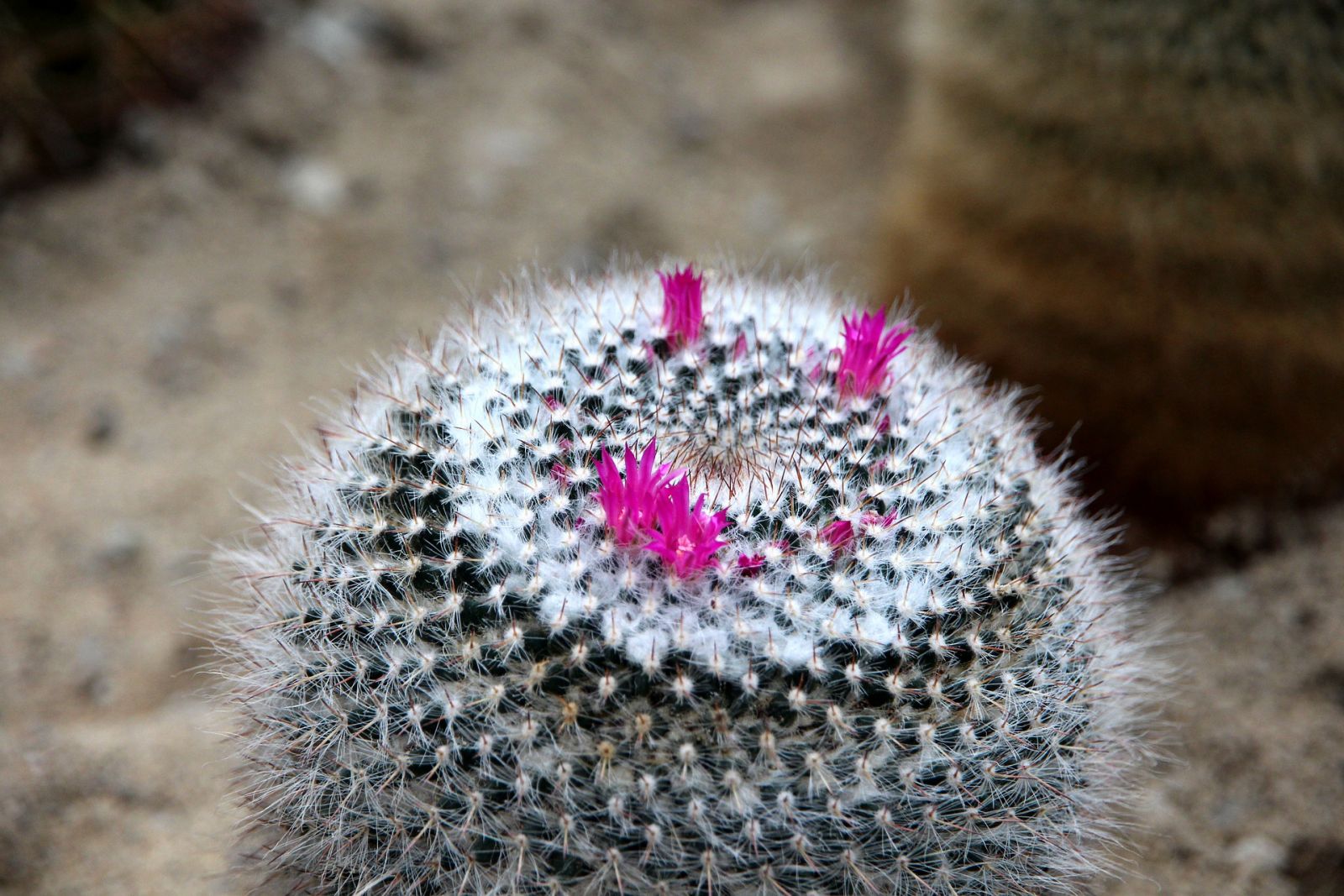Mammillaria
The Mammillaria is a cactus that originates from the southwest of the United States and Mexico. When you care for it in the right way, you will get a lot in return: the flowering cactus displays a beautiful pink or white crown of flowers when it is in bloom. Choose from lots of different types of Mammillarias in various shapes and colours.
A Mammillaria cactus for every home and garden
The Mammillaria is known for its many varieties. Some of these are perfect for growing indoors, others will surely complement your desert garden. A list of Mammillaria cactus plants in UK includes:
- Mammillaria plumosa: the feather cactus has white, feathery spines, making it look like it is covered with a layer of snow. In reality, they protect the plant from heat and sunlight. The seemingly cute cactus hides sharp spines to protect itself from animals and drought;
- Mammillaria spinosissima: the Red-Headed Irishman looks a bit like the typical cartoon cactus. When you make a cactus drawing, it will probably look like this one. This lovely cactus has red spines and is very easy to grow, not minding a bit of neglect;
- Mammillaria longimamma: the nipple cactus has long tubercles and thin spines. When the cactus blooms, beautiful yellow flowers spring up;
- Mammillaria rhodantha: the rainbow pincushion has lots of large spines that cover the entire cactus. It has tiny but wonderful magenta flowers and can be kept indoors.

How cacti are adapted to a desert climate
Cactus plants are able to adapt to high temperatures and dry environments. Some cactus adaptations include their shallow root system, making it easy for them to quickly gather water, and their sharp spines, protecting the plant from predators. Because it does not rain a lot in the desert, the cactus has learned how to act quickly when it does rain. Their roots are shallow and are spread horizontally so they can collect rain water over a large surface. A Mammillaria does not have any leaves to avoid the loss of water through evaporation. Instead of leaves, cactuses use spines to survive in the harsh desert climate.
What large cactuses can add to your garden
A large cactus adds texture and shape to your garden. Use big cactuses to create focal points in your garden, where all attention is immediately drawn to. Make sure to fill up your borders with Mammillaria cactuses. Create pleasant living conditions by mimicking a desert landscape. Add rocks and boulders to create a little rock garden where your cactuses can thrive in. Combine different coloured cactuses. The white feathers of the Mammillaria plumosa fit perfectly next to the red-spined Mammillaria spinosissima. By mixing up different types of Mammilarias, you keep your garden lively and colourful.
6 tips to grow a mini cactus using homebase lighting
It is not really hard to keep a Mammillaria cactus: water the plant weekly during its growing season and monthly during the winter. However, one element is essential in the care for your cactus: sunlight. When your cactus does not receive enough light indoors, it is possible to use artificial light. Follow these 6 steps to grow your cactus using homebase lighting:
- Use the right soil for your cactus: a mixture of grit, washed sand and soil;
- Fill up an unglazed clay pot that has drainage holes with your cactus compost;
- Set up your homebase lighting by using 20 watt per square foot;
- Position the tubes about one foot above the Mammillaria cactus plant;
- Put on the lighting for at least 12 hours a day. Start out with 20 hours of light for your seedlings, but gradually bring this amount down to 16 hours;
- Feed your cactus during its growing season by using low-nitrogen fertilizer and water the soil when it dries out.

